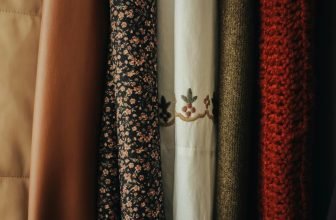
To infuse sustainability into your wardrobe, opt for eco-friendly materials like organic cotton and recycled fabrics. Support brands with fair labor practices and ethical certifications. Consider creating a capsule wardrobe with versatile pieces and investing in timeless items that reduce the need for constant purchases. Embrace mindful shopping habits that align with your values and explore secondhand options for a more sustainable wardrobe. Choosing sustainable fashion can positively impact the environment and support ethical practices in the fashion industry.
Understanding Sustainable Fashion Basics
To grasp the essence of sustainable fashion, consider its core principles and impact on the environment. Sustainable fashion focuses on creating clothing in ways that are environmentally friendly, socially responsible, and economically viable. This means using eco-friendly materials like organic cotton, hemp, or recycled fabrics to reduce the environmental footprint of the fashion industry.
The impact of sustainable fashion goes beyond just the materials used. It also involves fair labor practices, ethical working conditions, and supporting local communities. By choosing sustainable fashion pieces, you're supporting brands that prioritize the well-being of workers and communities, ensuring that the people behind your clothes are treated fairly and ethically.
Incorporating sustainable fashion into your wardrobe isn't just about the clothes you wear; it's about making a conscious choice to support ethical practices and protect the environment. By understanding the basics of sustainable fashion, you can make informed decisions that align with your values and contribute to a more sustainable future.
Shopping Mindfully and Ethically
When considering incorporating sustainable fashion into your wardrobe, it's crucial to start shopping mindfully and ethically to make informed choices that align with your values. Begin by researching brands that prioritize sustainability and ethical practices. Look for certifications like Fair Trade, Global Organic Textile Standard (GOTS), or OEKO-TEX to ensure the products meet certain environmental and social standards.
Another way to shop more mindfully is by investing in high-quality, timeless pieces that will last longer and withstand trends. Opting for versatile items that can be styled in various ways helps reduce the need for constant new purchases. Before making a purchase, ask yourself if you truly need the item and if it fits seamlessly into your existing wardrobe.
Consider shopping secondhand or participating in clothing swaps to give pre-loved items a new life. By extending the lifespan of clothing, you contribute to reducing waste and the demand for new production. Being mindful and ethical in your shopping habits can significantly impact the sustainability of your wardrobe.
Building a Capsule Wardrobe
Consider streamlining your wardrobe by building a capsule collection of versatile and timeless pieces that can be mixed and matched effortlessly. A capsule wardrobe typically consists of a limited number of high-quality garments that can be worn in various combinations, making it easier to create stylish outfits while reducing the need for excess clothing. Start by selecting staple items like a classic white shirt, well-fitting jeans, a tailored blazer, a little black dress, and comfortable flats or sneakers.
When building your capsule wardrobe, opt for neutral colors like black, white, navy, and gray, as they're easy to mix and match. Investing in quality pieces made from durable materials will ensure longevity and reduce the frequency of replacements. Consider the versatility of each item and how it can be dressed up or down for different occasions. By focusing on quality over quantity and choosing timeless designs, you can create a sustainable wardrobe that minimizes waste and aligns with your values.
Embracing Eco-Friendly Fabrics
Embracing eco-friendly fabrics involves selecting materials that are sustainable and environmentally conscious, contributing to a more responsible approach to fashion. When choosing eco-friendly fabrics, prioritize options like organic cotton, Tencel, hemp, and recycled polyester. These materials are produced using fewer chemicals, water, and energy compared to traditional fabrics, reducing the negative impact on the environment.
Opt for clothing made from organic cotton, which is grown without synthetic pesticides or fertilizers, promoting soil health and biodiversity. Tencel, a type of lyocell fabric, is crafted from eucalyptus trees that require minimal water and no harmful chemicals to grow. Hemp is another excellent choice as it grows quickly, improves soil health, and requires little water and pesticides.
Additionally, consider garments made from recycled polyester, which helps reduce the amount of plastic waste in landfills and oceans. By incorporating these eco-friendly fabrics into your wardrobe, you can't only elevate your style but also make a positive impact on the planet.
Conclusion
Incorporating sustainable fashion into your wardrobe doesn't have to be overwhelming. By understanding the basics, shopping mindfully, building a capsule wardrobe, and embracing eco-friendly fabrics, you can make a positive impact on the environment while still looking stylish.
Start small and gradually make changes that align with your values. Remember, every little step counts towards a more sustainable future in fashion.




